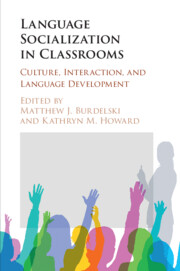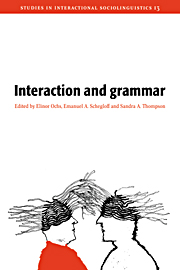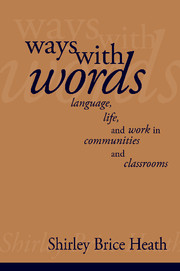Language Socialization in Classrooms
Classrooms are dynamic spaces of teaching and learning, where language and culture are intertwined in remarkable ways. The theory of language socialization explores how sociocultural practices in classrooms help to shape language learning and development. This collection is the first of its kind to bring together research on this fascinating concept. It presents ten case studies, based on linguistic and ethnographic research conducted in classrooms located within communities in North America, Europe and India, spanning learners from preschool, to primary and secondary school, to university. Following an introduction that discusses the theory and core concepts of language socialization, the volume is divided into three central themes: socializing values, dispositions, and stances; socializing identities; and language socialization and ideology. Both new and more experienced researchers will appreciate its new insights into how language socialization is carried out across the globe.
- The first volume to bring together research focusing on language socialization in the classroom
- The research is global in its reach, based on case studies from North America, Europe and India, allowing the reader to explore how language socialization is carried out across the globe
- Provides an overview of language socialization, giving researchers who are new to the field a full introduction to the concept
Reviews & endorsements
'This remarkable volume offers in-depth accounts of socialization to and through language. It is a rich and valuable addition to other studies of language use in classrooms and helps us understand socialization through the often taken-for-granted aspects of everyday interactional routines.' Vibeke Grøver, University of Oslo
'Scholars and practitioners of education and learning will find Language Socialization in Classrooms: Culture, Interaction, and Language Development to be an invaluable book … This volume is a well-balanced collection of essays by both young and established scholars who have been actively promoting research on language socialisation in the classroom … readers will definitely enrich their views on the characteristics of sociality in classrooms.' Akira Takada, Contrastive Pragmatics
Product details
September 2022Paperback
9781316638354
289 pages
228 × 152 × 16 mm
0.43kg
30 b/w illus. 10 tables
Available
Table of Contents
- 1. Introduction. Language socialization in classrooms Matthew J. Burdelski and Kathryn M. Howard
- Part I. Socializing Values, Dispositions, and Stances:
- 2. Interactional contingencies and contradictions in the socialization of tolerance in a Spanish multicultural school Inmaculada M. García-Sánchez
- 3. Shaping Sikh youth subjectivities in a US gurdwara: discursive socialization of religious heritage in Sikh history classes Wendy Klein
- 4. Affective stance and socialization to Orthodox Christian values in a Russian heritage language classroom Ekaterina Moore
- Part II. Socializing Identities:
- 5. Learning to be a poet: Chjam'è Rispondi in a Corsican school Alexandra Jaffe
- 6. Teaching words, socializing affect and social identities: negotiating a common ground in a Swedish as a second language classroom Asta Cekaite
- 7. Making the familiar change: language socialization via contrapuntal interaction in a US high school language arts class Betsy Rymes and Andrea Leone-Pizzighella
- 8. Negotiating epistemic authority and co-constructing difference: socializing 'nonnative speaker' teachers in a US graduate program in TESOL Debra Friedman
- Part III. Language Socialization and Ideology:
- 9. The morning assembly: constructing subjecthood, authority, and knowledge through classroom discourse in an Indian school Usree Bhattacharya and Laura Sterponi
- 10. Embodiment, ritual, and ideology in a Japanese-as-a-heritage-language preschool classroom Matthew J. Burdelski
- 11. Talking about lunch: diversity, language, and food socialization in a Danish kindergarten classroom Martha Sif Karrebæk
- Part IV. Conclusion:
- 12. Language socialization in classrooms: findings, issues, and possibilities Patricia A. Duff.







